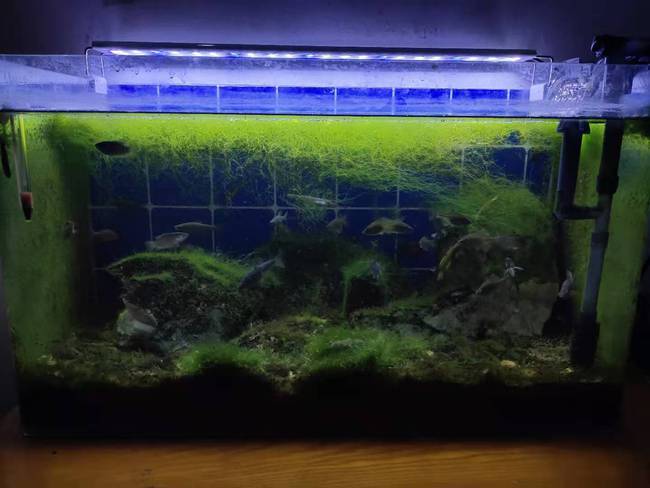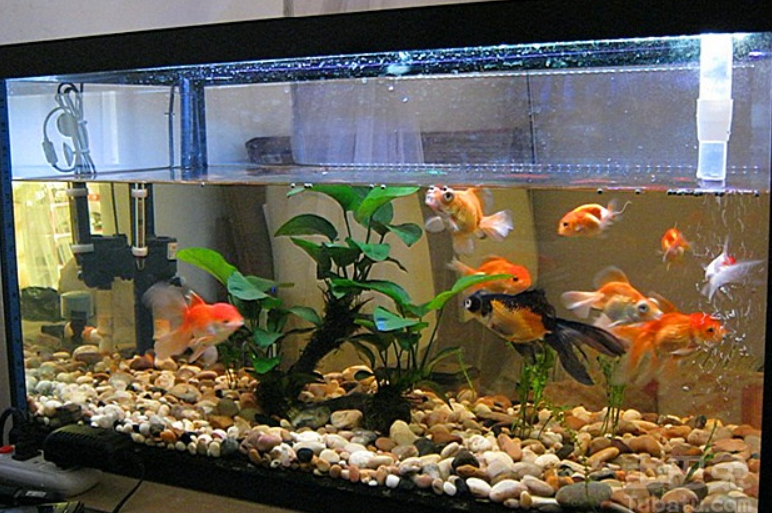Why is My Fish Tank Cloudy
Water is the source of all things, but also the essence of the fish tank.
If there is no water flow to set off the state of the fish, the whole tank will also be uninteresting and become a hollow decoration, and the fish without water will lose the basis of life to survive.
Quick Review
Is completely clear water suitable for fish?
There is a Chinese adage: “If the water is too clear, there is no fish”. Without these substances, the water is just ordinary, and fish do not have the nutrients they need in the water that is too clear, as well as oxygen, so the water is too clear to have fish. In addition, the water is so clear that there is no hiding place for fish at all, so the fish’s natural enemies (humans or birds) will find it more easily, and the species that has lost its protective color will be more likely to become extinct.
So, when you as a new fish keeper, excitedly buy a fish tank and some fish, you will expect that the water in your aquarium is always clear, in the first few days indeed as you wish, the water in the tank is clear, there is nothing impurity, the fish freely shuttle between the wigwam, water plants, you look at them, with a smile of satisfaction. But the good times don’t last long. About a month later, you are surprised to find that there are brown plants in your aquarium that you have never seen before, and the water in the tank starts to become cloudy.
You were not too anxious at that time, you thought it was normal, just like you need to clean the cat litter regularly when you have a cat, you thought it was normal to change the water regularly, and you thought as long as you changed the water, all the problems would be solved. However, you were wrong. After changing the water for your tank, the water temporarily regained its clarity, but after a day or two, the water became cloudy again, more serious than before the water change.
You didn’t know at the time that this was because the new water provided fresh nutrients, causing the cloudy water to multiply with more bacteria.
You think to yourself, “Should I just do nothing and let nature take its course?” Experienced fish-keeping friends tell you, “For a new tank, as long as ammonia and nitrite levels are not rising, doing nothing is the best way to go. Cleaning the filter will do nothing but disrupt the few beneficial bacteria that have a chance to build up.” With a try-it attitude, you let those brown plants grow wild in your tank, but after a few days, the aquarium still didn’t get any improvement, and even the fish and shrimp died for no reason.
At this point, you start to panic, watching more and more brown plants in your brand-new aquarium grow and spread, you suddenly have a kind of fear and anxiety, frustration like a dark cloud over your head, and you decided to do something to change the current bad status of your aquarium.
If the above is happening to you, then you must read this article!
First of all, you need to understand one of the most basic questions: that is, what exactly are those brown plants in your aquarium?

Diatoms are arguably the largest group of algae and are also known as “brown algae” in the aquarium world because they contain golden-brown diatoms, which is why they are often brown. It can be found in any kind of water where there is light, just a little or a lot. Diatoms are the most likely algae to appear and grow at the beginning of the tank.
Because the ecology has not yet stabilized, and the newly planted plants have not yet grown, there is a lack of nutrient contenders, a lot of nutrients are absorbed by diatoms, so diatoms grow rapidly. Especially for novice planters, using high-silica tap water as a water source (no choice) and abusing fertilizer in haste, it is extremely easy to cause algae growth.
Are brown algae harmful to fish tanks?
From a biological point of view, brown algae is not an organism that must be removed. It can absorb the end products of nitrifying bacteria and turn to convert these substances such as nitrogen and phosphorus into oxygen through its photosynthesis. As we all know, the role of oxygen is very critical for the survival of ornamental fish. However, in terms of ornamental fish tanks, brown algae are one of the most common algae in grass tanks, and it is the most difficult algae to remove in the grass tanks. Therefore, cleaning up brown algae is a must for most fish breeders.
What are the reasons for the appearance of brown algae?
- -The intensity of light
- -Excessive organic matter
- -High ammonia nitrogen in the water
- -Physical filtration is not strong
- -Nitrification system is not well established
- -Water change is not regular enough or no water change or less water change
Brown algae mainly appear at the beginning of the tank-building stage. It usually appears in the first three months of building a new tank, and often appears on the wall of the tank, as well as on the surface of sunken wood, rocks, slow-growing aquatic plants, and leaves, which can cause many novices to be overwhelmed.
How to solve the problem of brown algae in the aquarium?
1. Light Control
Generally speaking, we need to control the light at the beginning of the tank, about 5-6 hours of light per day for the first month.
2. Water changes
Lots of high-frequency water changes and will be less live feeding, at least for the first month; so that there will be less brown algae in the aquarium.
3. Tool shrimp
We can also use some creatures to help us deal with brown algae, of course, the most effective is the black-shelled shrimp.
The number of black shell shrimp used is generally 1-2 black shell shrimp per liter of water, such as in a 60-45-45 aquarium with 100 L of water, we can put 100-200 black shell shrimp to control these algae, but these black shell shrimp can not be put at once, my habit is to divide into 2-3 batches to put.
In addition, the same kind of black-shell shrimp – cherry shrimp, fire shrimp, golden rice shrimp, etc. can also have the same ability to clean the aquarium brown algae as the black-shell shrimp.
4. Tool fish
In addition to these small tool shrimp of the rice shrimp category, some small catfish can also play a role in brown algae, such as elf and golden beard.
5. Tool snail
Besides small catfish and small rice shrimp, some ornamental snails also can clean brown algae, such as apple snails, onion snails, zebra snails, bee horn snails, abalone snails, and so on.
Apple snail is a fast breeding snail, the first generation of apple snails in our aquas cape will become unsightly or even die prematurely because of the unadapted shell of PH value, but the offspring will be very beautiful.
6. Add nitrifying bacteria
At the same time, the regular addition of nitrifying bacteria can also help the digestive system with rapid construction, which is fundamental to preventing algae.

Conclusion
The above is all about how to prevent brown algae outbreaks or how to deal with brown algae if we can see brown algae accurately, we can deal with it more calmly, brown algae is a visible phenomenon when the digestive system starts to form at the beginning of the tank.
Therefore, we don’t need to worry too much when brown algae appear, just follow the above method to deal with it correctly; otherwise, the digestive system will be unstable and the brown algae will not be eliminated for a long time.
